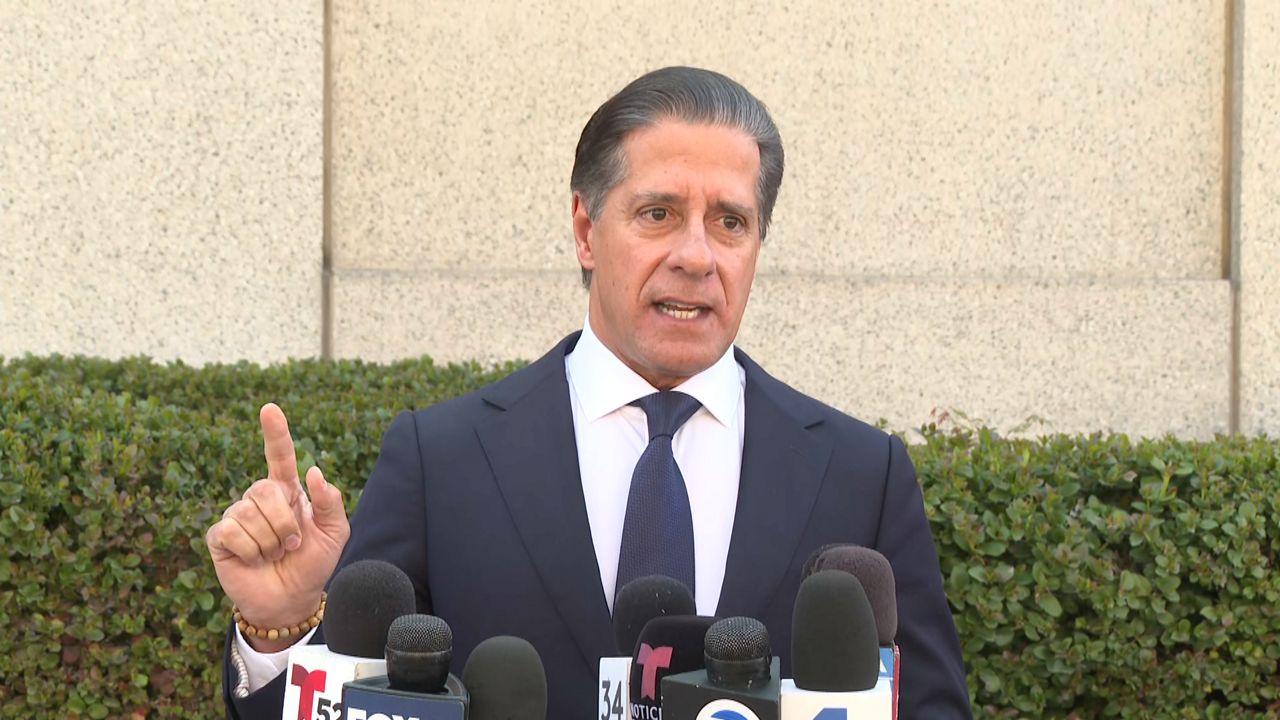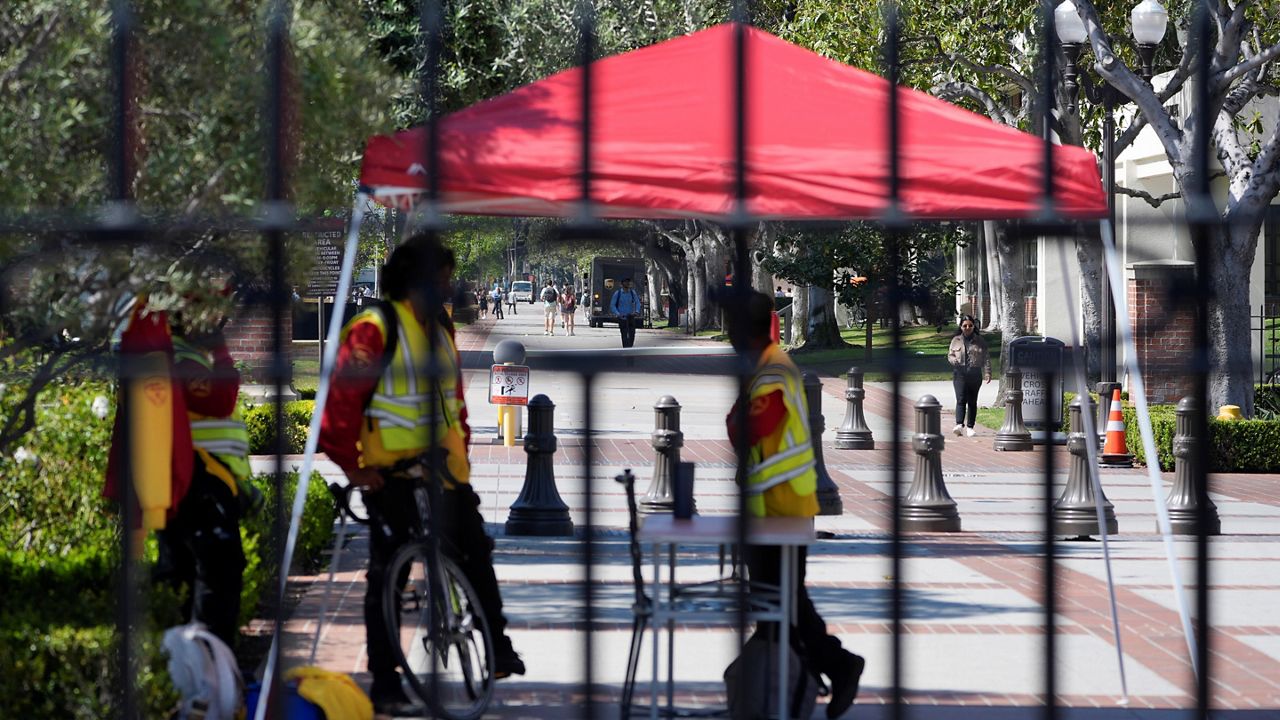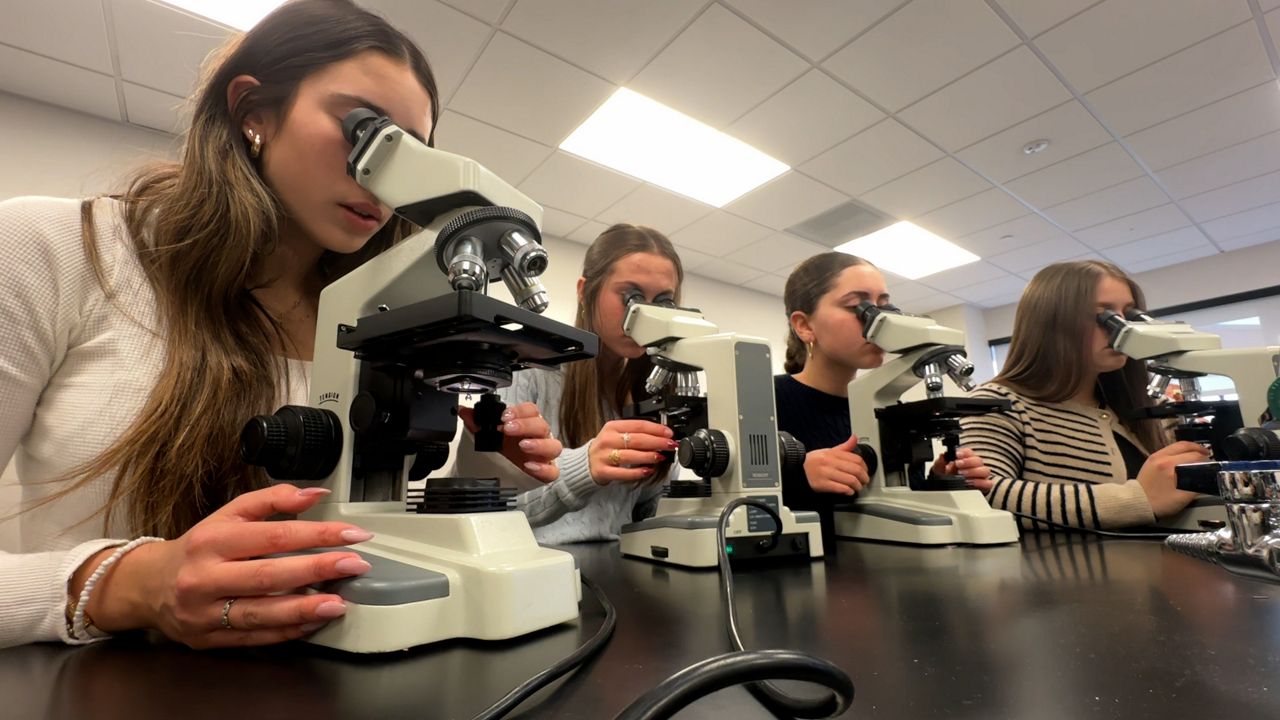WESTLAKE VILLAGE, Calif. — The morning routine at White Oak Elementary School in Westlake Village is a well-oiled, wellness machine.
Cars pull up with windows down so that staff members can check two things: foreheads and phones. Kids aren’t allowed to step out of the car or on campus until their parents prove they’ve completed a daily online health screening.
What You Need To Know
- Students and staff at White Oak Elementary have to perform daily health screenings before being allowed on campus
- The staff checks students' temperatures before they're let out of their cars
- Over 2,000 students have been on campus for weeks with zero cases of on-site transmission
- Fourth and fifth graders will return to in-person learning March 1
Shauna Oddo’s 8-year-old daughter has to sweep aside her bangs to have her temperature taken. While her mom can’t control how honestly other families answer the brief questionnaire, she thinks the school is doing the best they can.
“I do feel like my kid is safer here than I am if I go to Costco,” said Oddo. “They’re following all the protocols.”
The strict drop-off protocol is just one part of a herculean effort underway to make sure students and staff in Las Virgenes Unified School District remain safe and healthy. Special needs students came back to campus in October. A few weeks later, they were joined by students up to third grade. Fourth and fifth graders are on deck to return next week. But right now, Superintendent Dr. Dan Stepenosky says about one-fifth of the district's 10,000+ students are in their classrooms.
“2,200 students in total, zero transmission on our campuses, which is awesome,” said Dr. Stepenosky. “And that’s a testament to the staff and the students and the parents, everyone taking this seriously.”
He admitted that he was worried how 5-year-olds would manage but was immediately impressed.
“They get it,” said Dr. Stepenosky. “They get how important this is and they get that decisions they make impact everyone around them, which is a great lesson for us all to learn.”
Physical health isn’t the only concern on campus. First grade teacher Kristy Kaufman explained that the students were excited but also a little anxious about returning to in person learning. She found that the best way to calm those nerves was to allow them the time and space to express themselves.
“The academics will come,” she said. “We need to take care of our brains and our bodies and our hearts first.”
That goes for her, too. Kristy comes from a long line of teachers and feels she was destined for a career in education. She even has a framed photograph of herself in second grade, pointing to the blackboard and looking very much at home. She explained how she didn’t even realize how affected she was mentally and emotionally until she and the students were finally reunited in the classroom.
“When we came back it was like, 'There you are,'" she told Dr. Stepenosky. “You know, you’re fulfilled again.”
Not all of the district’s best laid plans have stuck. Students are in a hybrid schedule with the school day broken into two cohorts — a morning and afternoon session with 90 minutes in between. Originally, teachers had to leave the room during that time so the space could be cleaned with an electrostatic sprayer. The district has since done away with step.
“The science has evolved, and surface transmission just isn’t nearly as much of a concern,” Dr. Stepenosky said.
It’s all part of the learning curve, and he added that he’s happy to share what he’s learned with other districts. In fact, he said administrators from several Southern California school systems have contacted him to pick his brain or tour the campuses. District representatives who can’t visit can schedule a time to observe the protocols via zoom.
“We’re all in this together. We’re all part of the learning community. We want to help and lift up all the children in L.A. County,” said Dr. Stepenosky.
And while his district is a fraction of the size of some others in the state and the county, he thinks the strategies LVUSD has implemented will translate.
“Obviously community spread matters, and we know different communities in L.A. have been impacted differently, but generally speaking, the protocols do work.”
With another morning drop-off complete, Oddo gave the school high marks for the way they’ve handled what she calls an awkward and challenging situation. What concerns her is that the questionnaire operates on the honor system, as she described it. She just hopes everyone takes their daily homework assignment as seriously as she does.
“It’s tough when you have to trust other families to do what you’re doing in your own home,” Oddo said. “I think it’s not the school that’s hard for me. It’s trusting the other people.”
But with zero cases of on campus transmission, it seems like the district’s safety protocols are checking all the right boxes.
CORRECTION: A previous version of this story incorrectly stated the name of the school performing daily health screenings before allowing students back on campus. The error has been corrected. (February 24, 2021)











